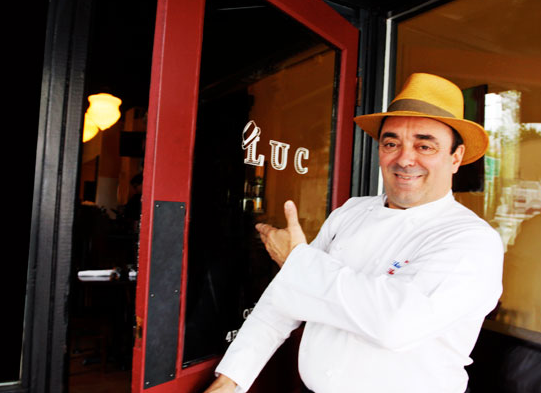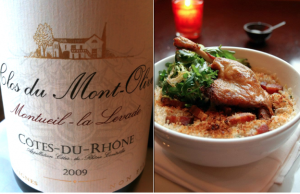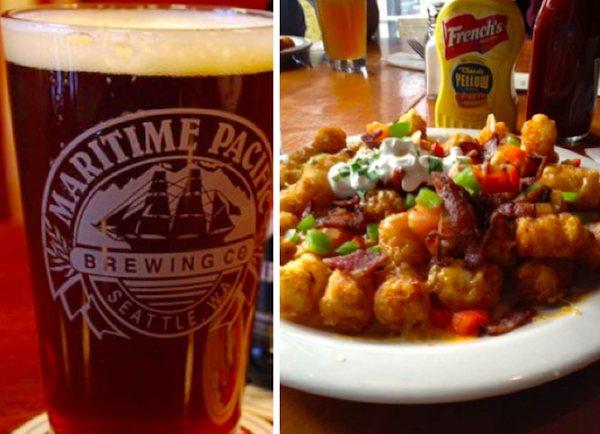Eating and drinking is a completely subjective encounter and should be based upon personal preference alone. However, Erin Thomas likes to eat, drink and share her opinion on finding your epicurean zen in Seattle-area dining.
The Chef in the Hat’s traditional French dish paired with extreme value wine from a leading French chateau.
Sunshine-soaked February days can be misleading. It is still winter and sideways rain will soon return to remind you of that. Thankfully, winter food dishes are fully functioning and available to additional comfort to get through the gloomier days.
There are not many dishes that can comfort (and bloat, increase weight, etc.) like the French casserole dish of cassoulet. The marriage of beans, meat, pork skin and often slight breading is blissful — slow-cooked for the utmost melding. The dish is named after the physical dish it is cooked in, the deep-dish casserole bowl. Although cassoulet is more mass-marketed in France — canned in jars like Campbell’s soup — in the Northwest, it is still unadulterated prosperity in a pot.
Luckily for Seattle, we have James Beard Award-winning chef, Thierry Rautureau, Frenchman extraordinaire and better known as the “Chef in the Hat.”
Rautureau, who’s twinkling charisma and natural magnetism might precede his stellar cooking background, began cooking at a young age with his mother on their Muscadet-located farm in France. He has served up plates in Chicago, Los Angeles and then Seattle where he chose to stay put and buy the then-shuttering casino online Rover’s to reopen it in 1987 as his Pacific Northwest haven.
With 25 years under his belt at his beloved Rover’s (which closes this spring), Chef Rautureau is Seattle’s resident Frenchman — ready to cook, charm and don his famous fedora hat. His restaurant and cooking recognition is about as decorated as an army general, with awards from around the globe and many television appearances including competing in Top Chef Masters’ fourth season a few years back.
Location: Luc — After 23 years of success at Rover’s, Rautureau and his team opened up Luc, the bistro equivalent to big bro next door. Named for the chef’s father, Luc is a French-American café and bar dedicated to food and drink that soothes the weathered spirits and soothes through the weather itself.
Eating: Cassoulet ($23) — White beans soak up all the soul needed to make this dish complete, however, the addition of braised lamb mixed in, a hefty pork sausage and a healthy duck leg confit laid atop doesn’t hurt the cause. An arugula salad is tossed in for pepper notes and good measure, but the overall affluence of the dish is really the slow-simmered matrimony of flavors.
Drinking: Cotes du Rhône — Like cassoulet itself, the “hills of Rhône” are located in southern France, a region known for its northern half’s granite soils and its southern half’s sand/limestone soils, dividing the profiles of the wines it produces. Typically Grenache-heavy, Syrah, Cinsault, Carignan, Counoise and Mourvedre are grown widely as well. The wines tend to be full of fruit and spice, earth tones are sated, representing its signature mark of the region. Depth, body and acidity are all needed to bear examination amongst the bold flavors of the cassoulet. A wine possessing such qualities should then bring out the best components of the dish. Steer clear of wines that are too big, too tannic or too high in alcohol, the dish will out-shine them and highlight those listed flaws.
Specifics: Clos du Mont Olivet 2010 Cotes du Rhône Monteuil La Levade ($15) — That is all one chateau’s name, believe it or not and Clos du Mont Olivet is one of the more prestigious Châteauneuf-du-Pape producers out there. As their value blend, the grapes are from some of the older sites on the vineyard, with 80% Grenache, 15% Carignan and 5% Syrah. Fermented and aged without seeing any oak, the wine showcases its mineral-striken terroir and purity in fruits of ripe raspberry and plum, along side aromas of anise, five-spice, floral notes and a palate of juicy yet pleasant tannins and dazzling acid. Deep and complex, this wine over-delivers well beyond its price point.
Julia Child, the legendary television cook and icon to many chefs around the globe, once wrote that “an extremely good cassoulet can be made anywhere out of beans and whatever of its traditional meats are available.” Chef Rautureau has helped to prove her right that Seattle knows cassoulet.







